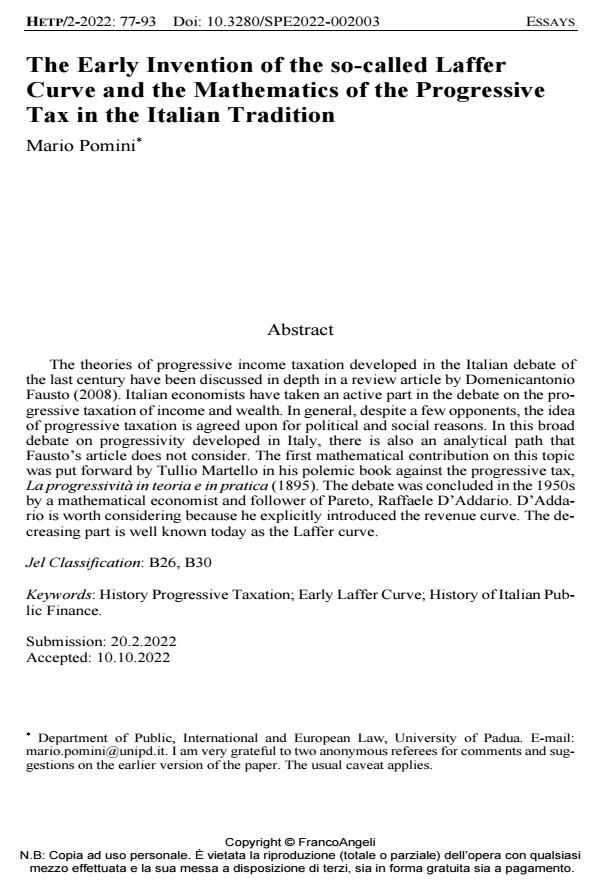The Early Invention of the so-called Laffer Curve and the Mathematics of the Progressive Tax in the Italian Tradition
Journal title HISTORY OF ECONOMIC THOUGHT AND POLICY
Author/s Mario Pomini
Publishing Year 2022 Issue 2022/2
Language English Pages 17 P. 77-93 File size 121 KB
DOI 10.3280/SPE2022-002003
DOI is like a bar code for intellectual property: to have more infomation
click here
Below, you can see the article first page
If you want to buy this article in PDF format, you can do it, following the instructions to buy download credits

FrancoAngeli is member of Publishers International Linking Association, Inc (PILA), a not-for-profit association which run the CrossRef service enabling links to and from online scholarly content.
The theories of progressive income taxation developed in the Italian debate of the last century have been discussed in depth in a review article by Domenican-tonio Fausto (2008). Italian economists have taken an active part in the debate on the progressive taxation of income and wealth. In general, despite a few oppo-nents, the idea of progressive taxation is agreed upon for political and social rea-sons. In this broad debate on progressivity developed in Italy, there is also an ana-lytical path that Fausto’s article does not consider. The first mathematical contri-bution on this topic was put forward by Tullio Martello in his polemic book against the progressive tax, La progressività in teoria e in pratica (1895). The debate was concluded in the 1950s by a mathematical economist and follower of Pareto, Raf-faele D’Addario. D’Addario is worth considering because he explicitly introduced the revenue curve. The decreasing part is well known today as the Laffer curve.
Keywords: History Progressive Taxation; Early Laffer Curve; History of Italian Public Finance.
Jel codes: B26, B30
Mario Pomini, The Early Invention of the so-called Laffer Curve and the Mathematics of the Progressive Tax in the Italian Tradition in "HISTORY OF ECONOMIC THOUGHT AND POLICY" 2/2022, pp 77-93, DOI: 10.3280/SPE2022-002003